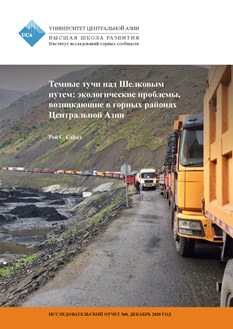Dark Clouds over the Silk Road: Challenges Facing Mountain Environments in Central Asia
Central Asia is a vital link in the huge Chinese Belt and Road Initiative (BRI) that follows much of the ancient Silk Road routes in this region. Other than the economic expansion and trade benefits associated with this complex infrastructure system, little is known about the many of the exogenous issues and direct environmental and socioeconomic impacts surrounding the BRI in Central Asia.
This opinion paper takes a sharper look at some of these externalities and potential effects through a sustainability lens. Major environmental concerns focus on the proliferation of spur roads that will develop off upgraded or new Belt Roads to promote exploitation of natural resources. Steep, high-elevation landscapes in the Pamirs and Tien Shan pose problems for road location and construction, and the history of road building in less formidable terrain in Yunnan, China is unsustainable, leading to epic landslide and gully erosion, which degrade river systems. Furthermore, many socioeconomic issues may arise like debt dependencies of poor countries, spread of communicable diseases into remote communities, depletion of mineral resources, and implicit compliance with pro-China policies.
While some of the poorer post-Soviet nations can reap short-term benefits from BRI plans, it is urged that they assess the long-term sustainability of BRI development and play an active role in determining the conditions for implementation.








